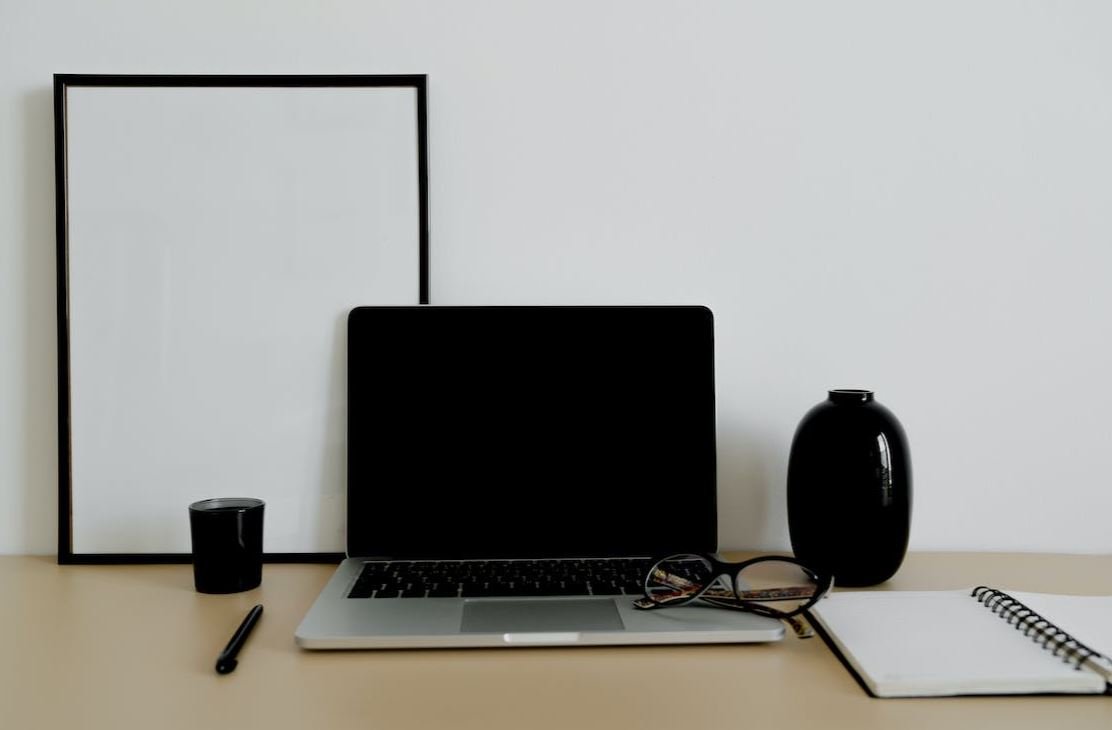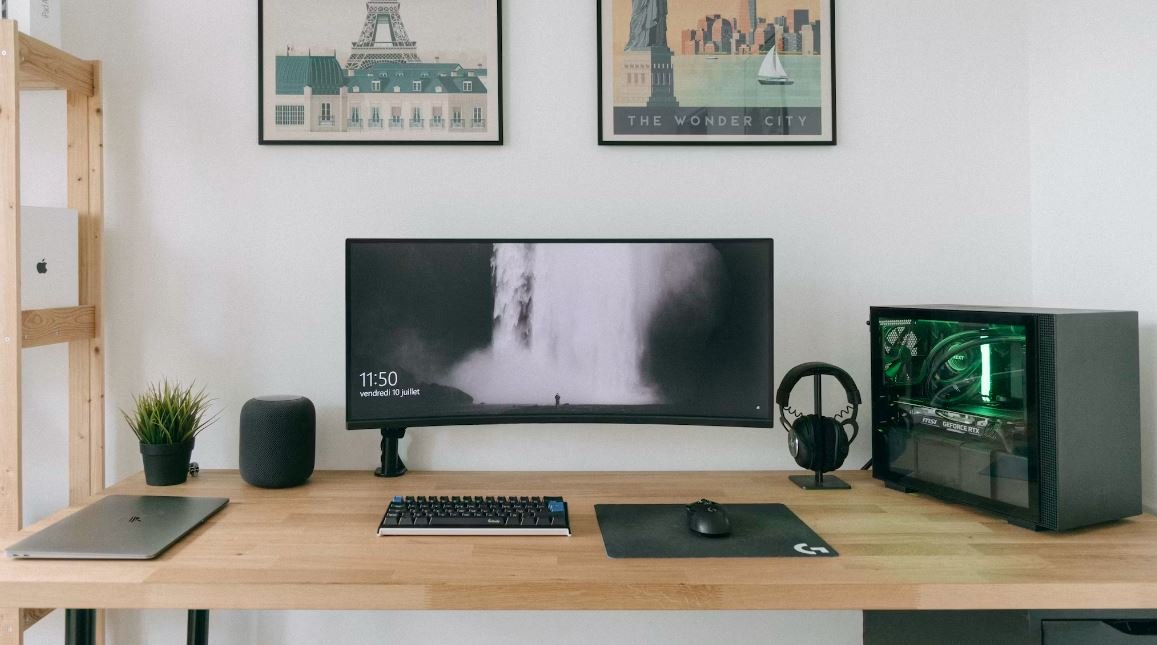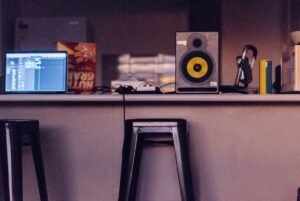Film Camera for Beginners
Are you new to photography and interested in exploring film cameras?
Film photography offers a unique experience and a different set of skills compared to digital photography.
In this article, we will guide you through the world of film cameras and help you choose the perfect one for beginners.
Key Takeaways
- Understanding film cameras: types and advantages.
- Factors to consider when choosing a film camera.
- Overview of popular film camera models for beginners.
- Basic film camera techniques and tips.
- Exploring film photography communities and resources.
**Film cameras** are a traditional and tangible way to capture images, offering a unique experience and rich aesthetics in the photographs they produce.
*They allow users to slow down and focus on the art of photography, making deliberate compositional choices and understanding the limitations of each shot.*
Types of Film Cameras
There are different types of film cameras available, each with its own advantages:
- **SLR (Single Lens Reflex) cameras** allow you to see through the lens and give you a preview of the actual image you will capture.
- **Rangefinder cameras** provide an alternative focusing mechanism, allowing you to measure the distance to the subject and manually adjust the focus.
- **Point-and-shoot cameras** are compact and automatic, making them great for casual photography.
With so many options available, **choosing the right film camera** can be overwhelming.
*Consider factors such as your budget, desired features, and the type of photography you wish to pursue.* Researching and comparing different models will help you make an informed decision.
Popular Film Cameras for Beginners
Here are some popular and beginner-friendly film cameras:
| Camera Model | Advantages | Price Range |
|---|---|---|
| Canon AE-1 Program | Easy to use, affordable, wide variety of compatible lenses. | $100 – $200 |
| Nikon FM10 | Great build quality, manual controls, excellent image quality. | $200 – $300 |
| Olympus OM-1 | Compact, lightweight, reliable, excellent image quality. | $150 – $250 |
*Film photography offers a unique combination of nostalgia and artistic expression, allowing you to create images with a timeless appeal.* Here are some basic techniques and tips to get started:
- Load your film correctly to avoid light leaks.
- Understand and adjust the different camera settings, such as aperture, shutter speed, and ISO.
- Consider composition and framing to enhance the visual impact of your photographs.
- Experiment with different films to achieve various tones, colors, and effects.
- Practice patience and mindfulness to fully immerse yourself in the process of shooting film.
Film Photography Communities and Resources
Being part of a film photography community can be valuable for beginners.
*Sharing your work, learning from experienced photographers, and discovering new techniques will inspire your own creativity.*
Here are some online communities and resources worth exploring:
- **Film Photography Subreddit**: A vibrant community on Reddit where you can share and discuss film photography.
- **Film Shooters Collective**: An online collective of film photographers showcasing their work and sharing insights.
- **Film Photography Project**: A website offering resources, tutorials, and a podcast dedicated to film photography.
**In conclusion**, film cameras offer a unique and enjoyable experience for beginners in the world of photography. *Embrace the challenges and rewards of shooting film, and let your creativity soar through the power of analog photography.*

Common Misconceptions
Film Camera for Beginners
There are several common misconceptions associated with film cameras and their usage, particularly for beginners. Let’s debunk some of these misconceptions:
1. Film cameras are outdated and obsolete:
- Film cameras offer a unique aesthetic and quality that digital cameras often struggle to replicate.
- Many professional photographers still use film cameras for certain types of photography, such as portraits or fine art.
- Using a film camera can provide a valuable learning experience and deepen your understanding of the fundamentals of photography.
2. Film cameras are difficult to use:
- While film cameras may have a learning curve compared to their digital counterparts, they can be easily mastered with practice.
- There are various resources available, such as online tutorials and workshops, specifically tailored to help beginners understand film camera operation.
- Understanding the basics of exposure and composition can greatly enhance your skills as a photographer, regardless of the type of camera you use.
3. Film cameras are expensive to maintain:
- While it is true that purchasing film and developing it can add to the overall cost, there are affordable options available.
- With proper care and regular maintenance, film cameras can last for decades without requiring any major repairs.
- Photography using film can be a cost-effective choice if you carefully select the number of shots you take and focus on capturing meaningful moments.
4. Film cameras lack convenience and flexibility:
- Film cameras may not offer the immediate feedback or instant sharing features found in digital cameras, but this can be advantageous in fostering patience and intentionality in photography.
- Shooting with a film camera encourages you to slow down and think more critically about each shot, resulting in more thoughtful and deliberate compositions.
- The limited number of exposures on a roll of film forces you to be more selective and considerate of each frame you capture.
5. Film cameras are only for nostalgic purposes:
- While some people may be drawn to film cameras for nostalgic reasons, it is important to recognize that film photography can offer a unique artistic expression and creative outlet.
- Exploring film photography allows you to experiment with different film stocks and techniques, enabling you to develop your unique style.
- Regardless of the medium, the art of capturing moments and creating meaningful images is a universal experience that can be enjoyed by beginners and professionals alike.

Introduction
As digital photography continues to dominate the industry, exploring the world of film cameras can be a rewarding experience for beginners. Apart from the nostalgic charm they bring, film cameras offer unique aesthetics and require thoughtful composition. In this article, we present ten delightful tables highlighting various aspects of film cameras to entice aspiring photographers.
Camera Types and Formats
Discover the diverse range of film camera types and formats:
| Type | Description |
|---|---|
| Point-and-Shoot Cameras | Simple, compact cameras with fixed lenses. Ideal for casual photography. |
| SLR Cameras | Single Lens Reflex cameras offer interchangeable lenses and a through-the-lens viewfinder. |
| Rangefinder Cameras | Composed with a separate viewing window, these cameras allow focusing and framing independently. |
| Medium Format | Larger negatives (typically 6×6 cm or 6×9 cm) that offer exceptional detail and tonal range. |
| Large Format | The ultimate in image quality, large format cameras utilize sheet film and offer extensive control. |
Film Types and Characteristics
Choose the perfect film for your photographic vision:
| Film Type | Characteristics |
|---|---|
| Color Negative | Vibrant and true-to-life colors with a wide dynamic range. |
| Color Reversal (Slide Film) | Produces positive images directly, renowned for rich colors and sharpness. |
| Black and White | Classic, timeless look with excellent tonal range and fine detail. |
| Infrared | Emphasizes unique infrared light properties, resulting in ethereal and dreamlike images. |
| Cross-Processed | Experimental technique where slide film is processed in negative chemistry, yielding surreal and unpredictable colors. |
Film Speed (ISO)
Explore the sensitivity and versatility of different film speeds:
| ISO | Speed Description |
|---|---|
| ISO 100 | Low speed; ideal for bright, sunny conditions and outdoor landscapes. |
| ISO 400 | Medium speed; versatile film suitable for a wide range of lighting conditions. |
| ISO 800 | Medium-high speed; great for low-light situations and action photography. |
| ISO 1600 | High speed; excellent for capturing fast-paced events and low-light scenarios. |
| ISO 3200 | Ultra-fast speed; best for extreme low-light conditions and experimental purposes. |
Classic Film Cameras
Unlock the vintage charm of these iconic film cameras:
| Camera Model | Key Features |
|---|---|
| Canon AE-1 | Programmed Auto Exposure with an affordable price, making it popular among beginners. |
| Nikon FM2 | Robust, all-mechanical body with a precise shutter mechanism and compatibility with Nikon F-mount lenses. |
| Pentax K1000 | A fully mechanical SLR camera known for its simplicity, durability, and affordability. |
| Leica M6 | High-quality rangefinder camera sought after by enthusiasts for its precision and craftsmanship. |
| Hasselblad 500C/M | Legendary medium format camera with exceptional image quality and reliability. |
Camera Accessories
Enhance your film camera system with essential accessories:
| Accessory | Description |
|---|---|
| Prime Lenses | Fixed focal length lenses that offer excellent image quality and wide aperture options. |
| Filters | Color correction, neutral density, and creative filters to modify light and achieve specific effects. |
| Sturdy support for long exposures, landscapes, and self-portraits. | |
| Allows manual shutter release without touching the camera, reducing shake for sharper images. | |
| An external light meter for precise exposure control. |
Developing Process
Discover the stages involved in film development:
| Stage | Description |
|---|---|
| 1. Film Loading | Insert the film into the camera, ensuring it is properly aligned and loaded onto the take-up spool. |
| 2. Exposure | Compose and expose the frames, carefully adjusting settings for optimal results. |
| 3. Film Rewinding | Once all exposures are made, rewind the film tightly into the cartridge to protect it from exposure. |
| 4. Film Development | Use chemicals and careful timing to develop the latent image on the film into a visible negative. |
| 5. Film Scanning/Printing | Digitize the developed film using a scanner or enlarge and print the negatives onto photographic paper. |
Pros and Cons of Film Cameras
Consider the advantages and drawbacks of film photography:
| Advantages | Drawbacks |
|---|---|
| Unique aesthetics and organic rendering | Requires additional cost for film purchase and development |
| Encourages thoughtful composition and limited exposures | Limited instant review and feedback |
| Increased focus on technical skills and understanding | Requires more time and effort for developing and scanning |
| Potentially lower upfront cost for used equipment | Less forgiving of exposure errors |
| Sense of surprise and anticipation with each roll | Limited ISO flexibility compared to digital counterparts |
Famous Film Photographers
Be inspired by these renowned film photographers:
| Photographer | Notable Works |
|---|---|
| Ansel Adams | Nature and landscape photography, known for his striking black and white images of the American West. |
| Dorothea Lange | Documented the Great Depression era, capturing powerful portraits and social issues. |
| Robert Capa | Famed war photographer, known for his powerful and intimate images from conflicts around the world. |
| Sally Mann | Explores themes of family, childhood, and the southern landscape with a distinctive investigative approach. |
| Wim Wenders | Filmmaker and photographer, renowned for his evocative visual storytelling and cinematic eye. |
Film Photography Resources
Explore further resources for your film photography journey:
| Resource | Description |
|---|---|
| Websites | Online platforms dedicated to film photography, offering tutorials, galleries, and forums for discussion. |
| Books | Comprehensive guides and inspirational volumes highlighting the world of film cameras and photography. |
| Workshops | Join hands-on workshops and seminars to refine your film photography skills alongside like-minded individuals. |
| Darkrooms | Discover local darkrooms or set up your own, allowing you to personally develop and print your images. |
| Film Camera Communities | Engage with fellow film enthusiasts through online communities and social media platforms. |
Conclusion
Embracing film photography allows beginners to step into a world of creativity, pushing the boundaries of their photographic skills. With an understanding of camera types, film formats, and various accessories, one can embark on a unique and rewarding journey. The charm of film cameras lies not only in the final images produced but also in the entire process — from selecting the perfect film to developing and scanning the negatives.
Frequently Asked Questions
What is a film camera?
A film camera is a device used to capture photographs on light-sensitive film. It differs from digital cameras as it uses chemical processes to produce tangible physical negatives or slides.
Why would I choose a film camera over a digital one?
Many photographers prefer film cameras due to the unique aesthetic qualities and the unpredictability of film. Film photography allows for a more hands-on, deliberate approach to the art form.
What are the different types of film cameras?
Common types of film cameras include 35mm SLR cameras, medium format cameras, and large format cameras. Each type offers different features and characteristics suited to various photography styles and purposes.
How do I choose the right film camera for beginners?
When selecting a film camera as a beginner, consider factors such as ease of use, availability of film, compatibility with accessories, budget, and desired features or shooting capabilities. Research different models and seek recommendations from experienced photographers.
How do I load film into a film camera?
Each film camera has a specific method for loading film. Generally, you will need to open the camera back, place the film cartridge into the film compartment, thread the film leader onto the take-up spool, advance the film until it is properly engaged, and then close the camera back securely.
What are some basic film photography techniques?
Some basic film photography techniques include understanding exposure settings, mastering composition, learning to focus manually, and developing a disciplined approach to framing and capturing images. Experiment with different film types and shooting conditions to refine your skills.
How can I process and develop film?
Film processing and development involve chemical processes that convert exposed film into negatives or positives. You can either learn to develop film at home using a darkroom setup and appropriate chemicals, or you can send your film to a professional film lab to be processed.
Where can I buy film for my film camera?
Film for film cameras can be purchased at photography stores, camera shops, or online retailers specializing in film photography supplies. Ensure you select the correct film type and format for your specific camera model.
What are some common challenges faced by beginners when using film cameras?
Some common challenges for beginners include understanding exposure and achieving proper exposure settings, focusing accurately using manual focus, loading film correctly, and developing the patience required for a slower workflow compared to digital photography.
Are film cameras still relevant in the digital age?
Yes, film cameras still hold relevance in the digital age. Many photographers appreciate the unique qualities and tactile nature of film photography. Film cameras offer an alternative creative process and allow photographers to craft their images in a distinct manner.




